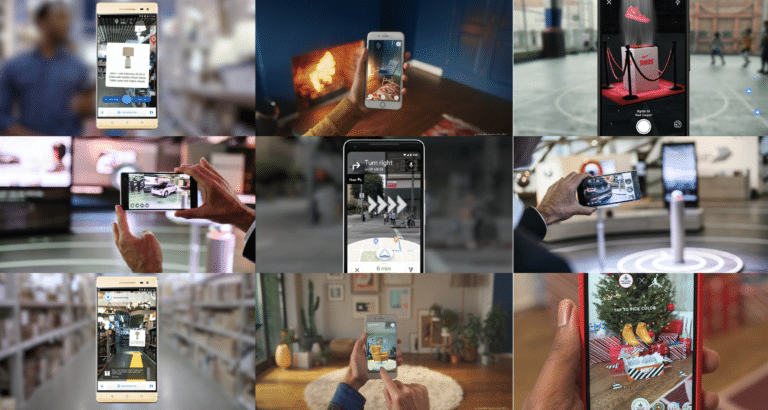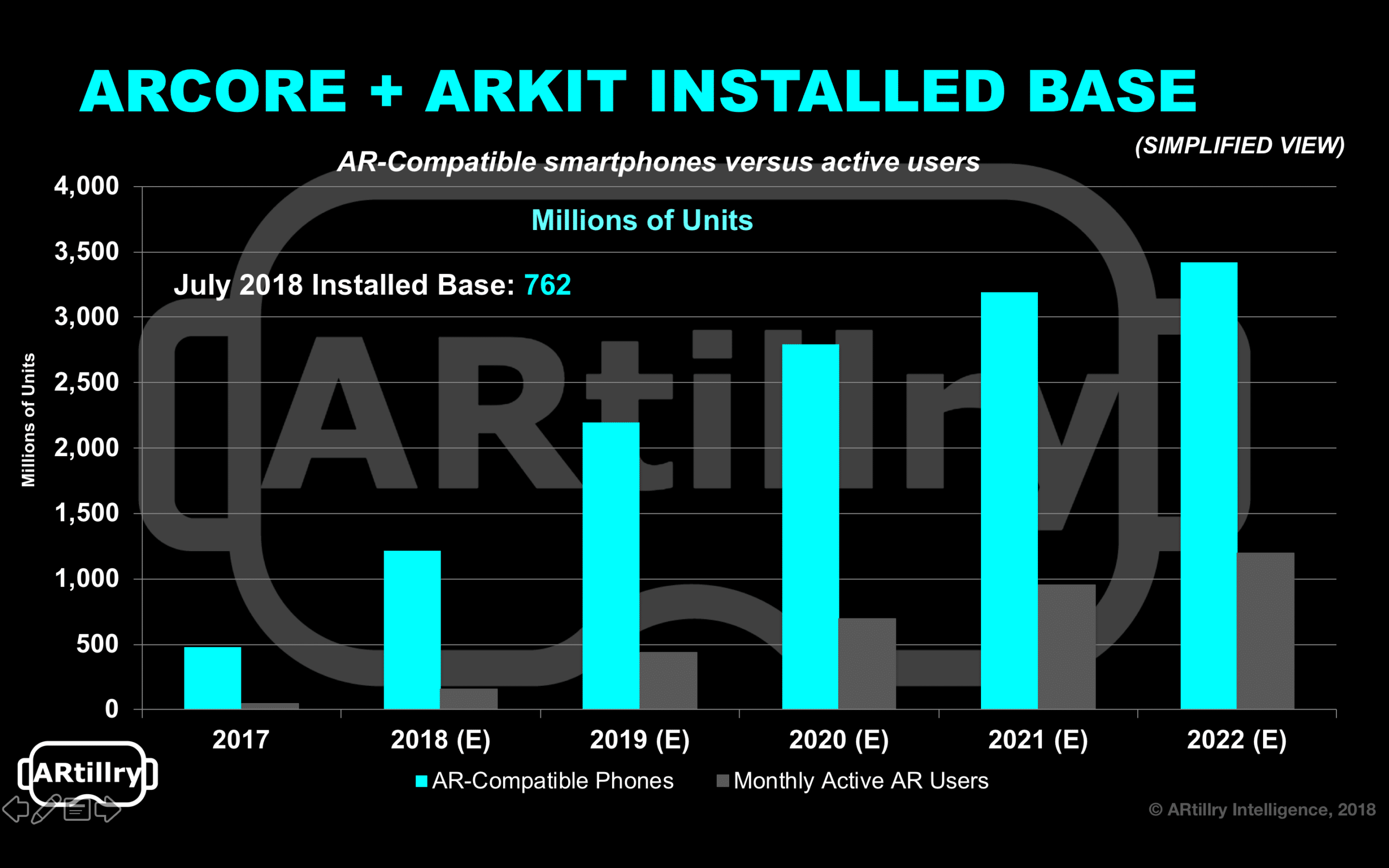
This post is adapted from ARtillry’s latest Intelligence Briefing, The Camera is the New Search Box: Ads in AR. It includes some of its data and takeaways. More can be previewed here and subscribe for the full report.
One of the many areas projected to be transformed by immersive computing is advertising. The visually-immersive nature of technologies like AR and VR can offer advertisers new ways to spotlight products, and engage prospective customers in deeper ways than 2D media.
For example, advertisers can create AR campaigns that let consumers visually infuse products in the world around them, as captured through their smartphone camera. Brands like Nike, Home Depot and Michael Kors are already experimenting with – and learning from – such campaigns.
Beyond graphical AR overlays, advertisers will soon be able to participate in a related area: visual search. A close cousin of AR, this is represented by tools like Google Lens, which let users point their smartphone cameras at objects around them to contextualize (or purchase) those items.

Altogether, AR ad formats are beginning to map to existing 2D ad formats that advertisers have been using for years. For example, branded graphical AR overlays are analogous to display advertising, while visual search can carry similar dynamics and user intent as search advertising.
But the opportunity is to go much deeper than these legacy formats in both creative capacity and effectiveness. Indeed, brands that have experimented with AR-based promotion already see favorable engagement and conversion metrics, such as 11x increases in product purchases.

The opportunity is further fueled by vested interest of tech giants. Tech’s “four horsemen” – Google, Apple, Facebook and Amazon – are especially keen on AR. Those specifically built on ad revenue (Google and Facebook), will fight to ensure positioning in advertising’s next era.
Resulting competition will accelerate innovation, investment and market timing for AR advertising in general. Indeed, one point of confidence ARtillry Intelligence holds for AR’s overall revenue generation and opportunity is the level of motivation behind these tech giants to make it happen.

But it won’t be without challenges and question marks. Though all of the above stands to reason and quantitative analysis, one wild card is advertiser adoption. They’re a famously laggard constituency of the tech ecosystem, and survey data indicate their AR uncertainty.
There are also practical hurdles. Though mobile AR’s addressable market is 762 million smartphones, the actual market is a subset of that. Active AR users total around 158 million, and session lengths are small, due to factors like arm strain, which diminish ad inventory.
All of these variables converge to drive $2.6 billion in AR ad revenues by 2022. And like the progression of ad formats mentioned above, it will start with display ads before more technically advanced visual search. That requires computer vision, the AR Cloud and other building blocks.
But how will this materialize? What campaign tactics work? And what does it mean for developers, media companies and anyone vetting AR? We dive deep on these questions in the latest report, and will continue to analyze the findings here in the coming weeks.


For a deeper dive on AR & VR insights, see ARtillry’s new intelligence subscription, and sign up for the free ARtillry Weekly newsletter.
Disclosure: ARtillry has no financial stake in the companies mentioned in this post, nor received payment for its production. Disclosure and ethics policy can be seen here.
